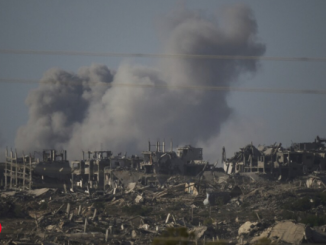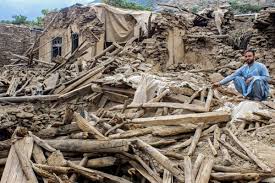
| Published August 7, 2025
Gaza in Crisis: A Healthcare System on the Brink
As the dust settles over Gaza’s war-torn neighborhoods, the human toll becomes heartbreakingly clear: more than 150,000 people injured—men, women, and children—many with life-altering wounds. Hospitals, already crippled by 18 years of blockade and intermittent bombardments, now face the unimaginable: a mass casualty crisis with no end in sight.
“We’re doing battlefield triage in hospital hallways,” says Dr. Hani al-Khatib, a surgeon at Gaza’s largest remaining trauma facility. “This is not medicine. It’s survival.”
A System Collapsed
Before the latest conflict with Israel erupted in 2023 and escalated through 2024 into 2025, Gaza’s healthcare system was already under strain. According to the World Health Organization (WHO), only 35% of Gaza’s hospitals are even partially functional today. Most face critical shortages of fuel, electricity, surgical supplies, antibiotics—and staff.
The Israeli bombardment campaign, following the October 2023 Hamas-led attacks, has decimated more than 70% of Gaza’s medical infrastructure, including clinics, ambulances, and medical warehouses. Doctors now perform amputations without anesthesia, while patients share bloodied beds—or lie on floors.
Doctors as First Responders and Last Hope
The burden has fallen squarely on Gaza’s overworked healthcare professionals. Many work 72-hour shifts, sleeping only when adrenaline fails.
“We have no painkillers. We use vinegar for disinfection. We stitch wounds with dental floss,” shares nurse Mariam Joudeh, whose clinic has treated hundreds since January. “Every decision is a choice between life and death.”
Some Palestinian doctors abroad have returned to Gaza, risking their lives to support field hospitals run out of mosques and schools. But even international aid workers are restricted by closed borders and delayed permits.
Children: The War’s Youngest Victims
Nearly half of the injured are children, according to a July 2025 UNICEF report. Many suffer from burns, crushed limbs, or shrapnel injuries. Trauma therapists—those who remain—are overwhelmed by a wave of psychological scars.
Eight-year-old Yusuf, pulled from rubble in Rafah, lost both parents and his right leg. “He doesn’t speak anymore,” says his aunt. “He stares at the ceiling all day.”
UNICEF warns that without urgent psychosocial support, Gaza may face “a generation marked by trauma.”
Aid Stuck at the Border
International organizations have mobilized, but access remains severely restricted. Aid convoys carrying medical equipment, portable X-ray units, and dialysis machines are stuck at Rafah and Kerem Shalom crossings, subject to Israeli security checks and bureaucratic delays.
“We have tons of supplies in Cairo waiting for clearance,” says Médecins Sans Frontières spokesperson Rachel Moreau. “Every hour counts. People are dying from infections and dehydration.”
A Grim Forecast
With over 2 million displaced Gazans, unsanitary conditions, and widespread famine, public health experts fear disease outbreaks could make the injury crisis even worse. Cholera, hepatitis A, and respiratory infections have already appeared in makeshift refugee camps.
“If this continues,” says WHO Middle East director Dr. Ahmed al-Mandhari, “we could lose more people to preventable illnesses than to bombs.”
Is There a Path Forward?
The path to recovery depends on one word: access. Access to medical supplies. Access to specialized care outside Gaza. Access to clean water, shelter, and international funding.
Yet the political deadlock between Israel, Hamas, Egypt, and global mediators shows little sign of easing. Reconstruction, let alone healthcare recovery, remains a distant dream.
Until then, Gaza’s caregivers carry on—not with resources, but with resolve.
“We will not abandon our people,” says Dr. al-Khatib, wiping sweat from his forehead in the makeshift ER. “We are all they have.”
Sidebar: Key Facts
-
Estimated Injured: 150,000+ since late 2023
-
Hospitals Still Functioning: <35% (WHO, July 2025)
-
Children Among the Injured: Nearly 50%
-
Medical Aid Awaiting Entry: 400+ tons at Egypt’s border
-
Top Needs: Anesthesia, antibiotics, trauma surgeons, dialysis units, power generators
 Implications:
Implications:
Here are the key implications of the situation in Gaza caring for over 150,000 injured amid war:
1. Public Health Collapse
-
The healthcare system is beyond capacity. Without urgent intervention, preventable deaths will skyrocket due to infections, lack of surgeries, or untreated chronic conditions.
-
Overcrowded shelters, water scarcity, and poor sanitation risk epidemics like cholera, typhoid, and hepatitis.
2. Long-Term Disability and Mental Trauma
-
Thousands will suffer permanent disabilities (amputations, paralysis) with little access to rehabilitation.
-
The lack of trauma counseling may result in a mental health crisis, particularly among children and teens—potentially fueling future instability.
3. Humanitarian and Ethical Responsibility
-
The crisis puts pressure on the international community, including the UN, to enforce humanitarian access and medical neutrality under the Geneva Conventions.
-
Continued obstruction of aid raises serious human rights concerns, with accusations of collective punishment.
4. Political Fallout and Regional Instability
-
The deteriorating health situation could further inflame tensions in the Middle East, straining Egypt, Jordan, and Lebanon with displaced civilians and rising anti-Israel sentiment.
-
Prolonged suffering may radicalize affected populations, complicating future peace talks and regional diplomacy.
5. Strain on Global Aid and Health Systems
-
International organizations like WHO, Red Crescent, and Médecins Sans Frontières face resource exhaustion, as Gaza becomes a prolonged emergency zone.
-
Donations may decline over time due to donor fatigue, competing crises (e.g., Ukraine, Sudan), or political pressures.
 Overall Takeaway:
Overall Takeaway:
Gaza’s struggle to care for over 150,000 war-wounded is not just a humanitarian emergency—it is a test of global conscience. The scale of injury, the collapse of healthcare, and the isolation of civilians present a grim portrait of a people trapped in a war zone with no viable path to healing.
Unless borders are opened, aid is delivered, and healthcare workers are empowered, Gaza will continue to bleed in silence. What happens next will define not only the region’s future—but also the world’s commitment to human dignity in the face of devastation.





Be the first to comment